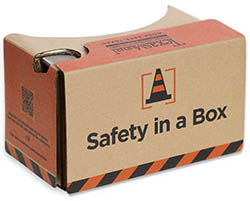Distracted driving
Hazard:
In Texas alone, there are approximately 300 fatal semi-truck accidents every year, and over 2,000 more that result in injuries. Many of these are the result of distracted driving, which includes far more than just using your phone on the road. Drivers can become distracted by eating, reaching for something, adjusting the radio, grooming, talking with a passenger and even trying to read or write while at the wheel.
Controls:
- Establish a company policy that prohibits the use of cell phones at the wheel.
- Educate employees on the hazards of distracted driving beyond cell phone use. Our 60 Seconds to Safer Driving video series shares educational lessons on different ways to prevent motor vehicle accidents.
- Provide hands-free devices for employees who need to access their cell phone while driving in order to do their job.
Drowsy driving
Hazard:
In 2015, nearly 137,000 hours-of-service violations were issued to commercial drivers, which means that hundreds of thousands of tired drivers were on our roads. When drivers are overworked or simply don’t get the rest they need, they put themselves and their fellow drivers at risk. Drowsy drivers are more likely to doze off at the wheel, less aware of what’s happening around them and slower to react in critical situations.
Control:
- Establish and enforce reasonable work-hour limits and be aware of hours-of-service regulations.
- Keep in mind that incentives offered to employees could encourage drivers to push themselves even when drowsy, or to violate regulations, which could cost your company.
- Require drivers to take regular breaks when driving long distances.
Inadequate vehicle maintenance
Hazard:
A small maintenance issue could quickly become dangerous under the right conditions. From tire blowouts that lead to a fatal rollover to malfunctioning seat belts that could have saved a life, maintenance issues can have serious consequences. With regular maintenance, drivers have a better chance of staying safe on the road.
Control:
- Create a maintenance inspection checklist and ensure it is completed regularly.
- Require employees to complete a condensed version of the vehicle inspection checklist before getting on the road, evaluating things like tire pressure and headlight functionality.
- Resolve maintenance issues immediately and don’t allow the vehicle to be driven again until the issues are completely resolved.
Loading and unloading
Hazard:
Strains and sprains account for half of all injuries in the trucking industry, with most occurring during the loading and unloading of freight. With a few simple controls and adequate training on lifting techniques, you can give workers the tools they need to do the job safely.
Control:
- Ensure that loads are completely secured before leaving the site, and require that drivers check for shifting before unloading.
- Provide appropriate equipment for loading and unloading, and training for that equipment.
- Don’t overload workers by sending the driver alone when the load will require more than one person to move the freight.
- Access OSHA’s industry-specific resources for recommendations on unique hazards, such as oil and gas-related transport, logging and beverage delivery.

